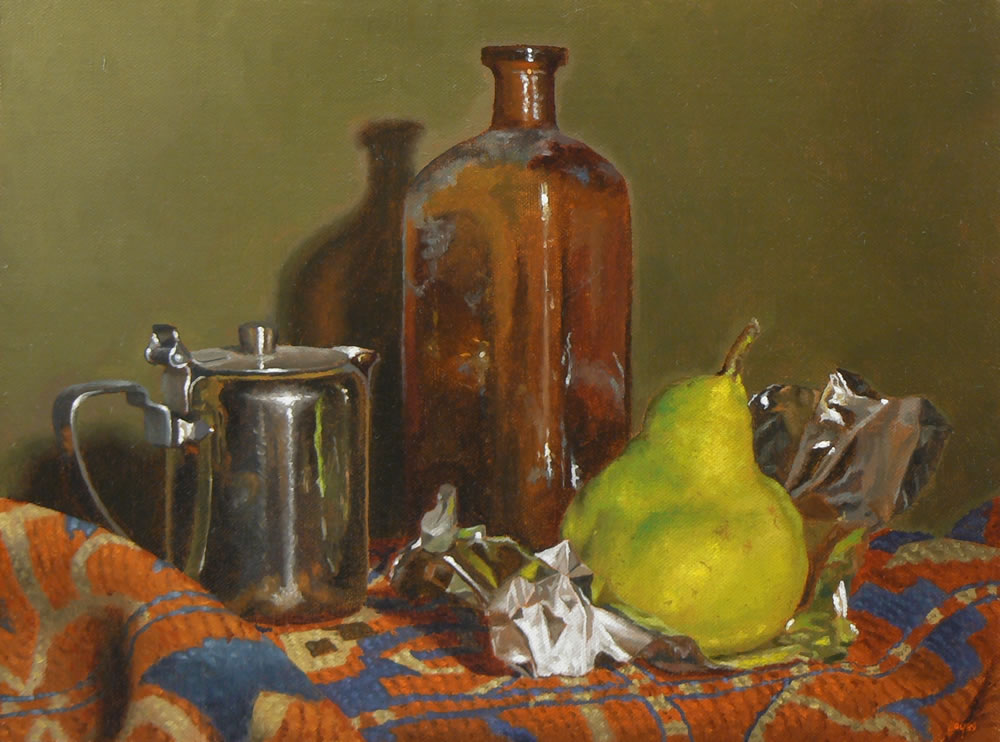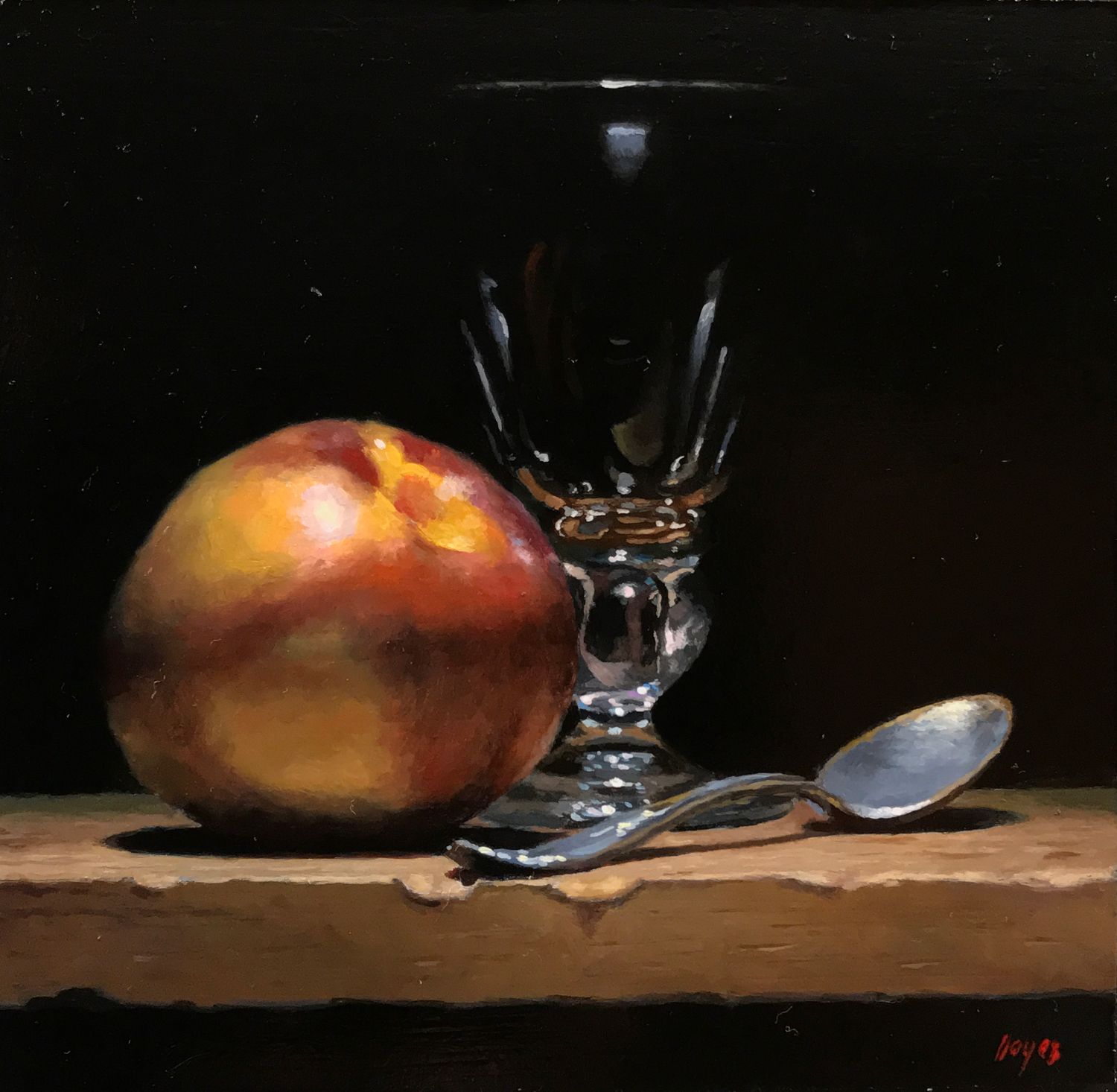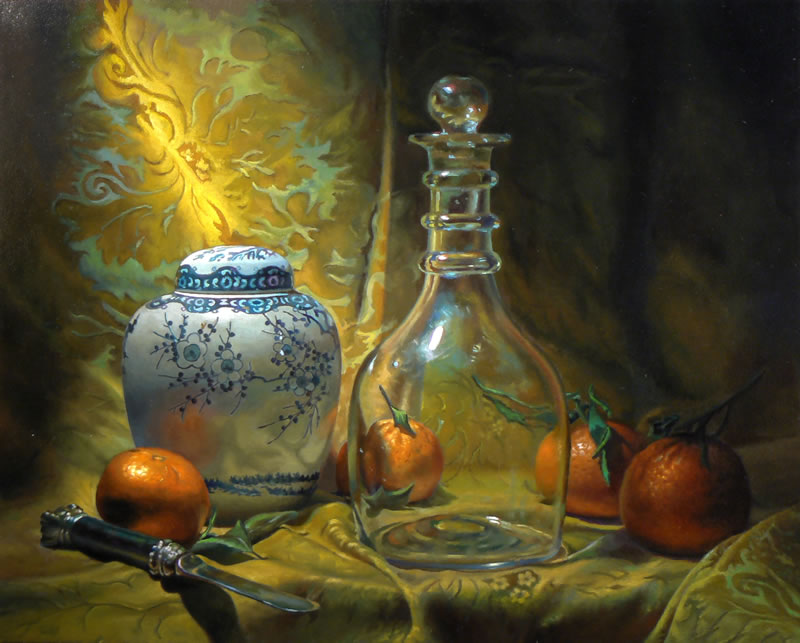Following The Light Approaching a painting for the first time

oil on linen, 9×12 inches
Last time I began a 3 part series about how I explore a painting I’m seeing for the first time – essentially a description of my own approach to art appreciation.
I began by talking about identifying and thinking about the painting’s center of interest.
After I’ve spotted the center of interest, the next thing I notice is the light, and I usually ask a few simple questions.
Where does it come from?
Most paintings have a single light source – this unifies the painting, and helps simplify understanding the composition (paintings with multiple light sources certainly do happen, but they are less common).
Although I experiment with many different light scenarios, most of my own paintings have a light coming from directly above (top light).
The shadowbox I use to stage my still life compositions makes this very easy – in fact it is the default choice.
By looking at the light, can I tell anything about the source? Is it natural sunlight? Artificial illumination? Does it have a particular color to it?

oil on panel, 5×5 inches
How strong is the light?
The strength of the light will have a profound impact on the scene.
Obviously, a clear strong light will create a very different atmosphere than soft, muted light.
Personally, I tend to prefer softer light – it aligns with the moods I usually want to express, and often use filters to reduce and modify the strength and quality of the light entering my shadow box.
What kind of shadows does it create?
I look to see if there appears to be anything intentional or striking about the shadow.
Many artists work deliberately with the shadows to create form in their compositions, and often there is a conscious alternation of light and shadow areas.
This juxtaposition can be used to create a sense of rhythm and movement in the painting.

oil on panel, 16×20 inches”
How does the light flow through the painting?
After trying to understand the shadows, I look at the painting as a whole and try to get a sense how the light moves through it.
Light can often be understood to flow through a painting much like water flowing through a landscape.
I will often look to see if the artist has taken advantage of this principle, and if I can trace such a flow in the work I’m looking at.
For me, this sense of light passing fluently and easily through the painting is a very sure sign of the painter’s ability – conveying it requires a deep grasp of the behavior and quality of light.
What kind of drama and mood is it creating?
Finally, When I’ve spent some time trying to understand the physical characteristics of the light in a painting, I take a step back and ask what kind of mood the light has created.
Has the artist used the light in a way that deliberately enhances or reinforces the feeling of the painting?
Once I’ve asked these questions, I feel like I’ve begun to understand the light in the painting I’m looking at.
Next time, I’ll share how I begin to appreciate the color harmony in a painting.